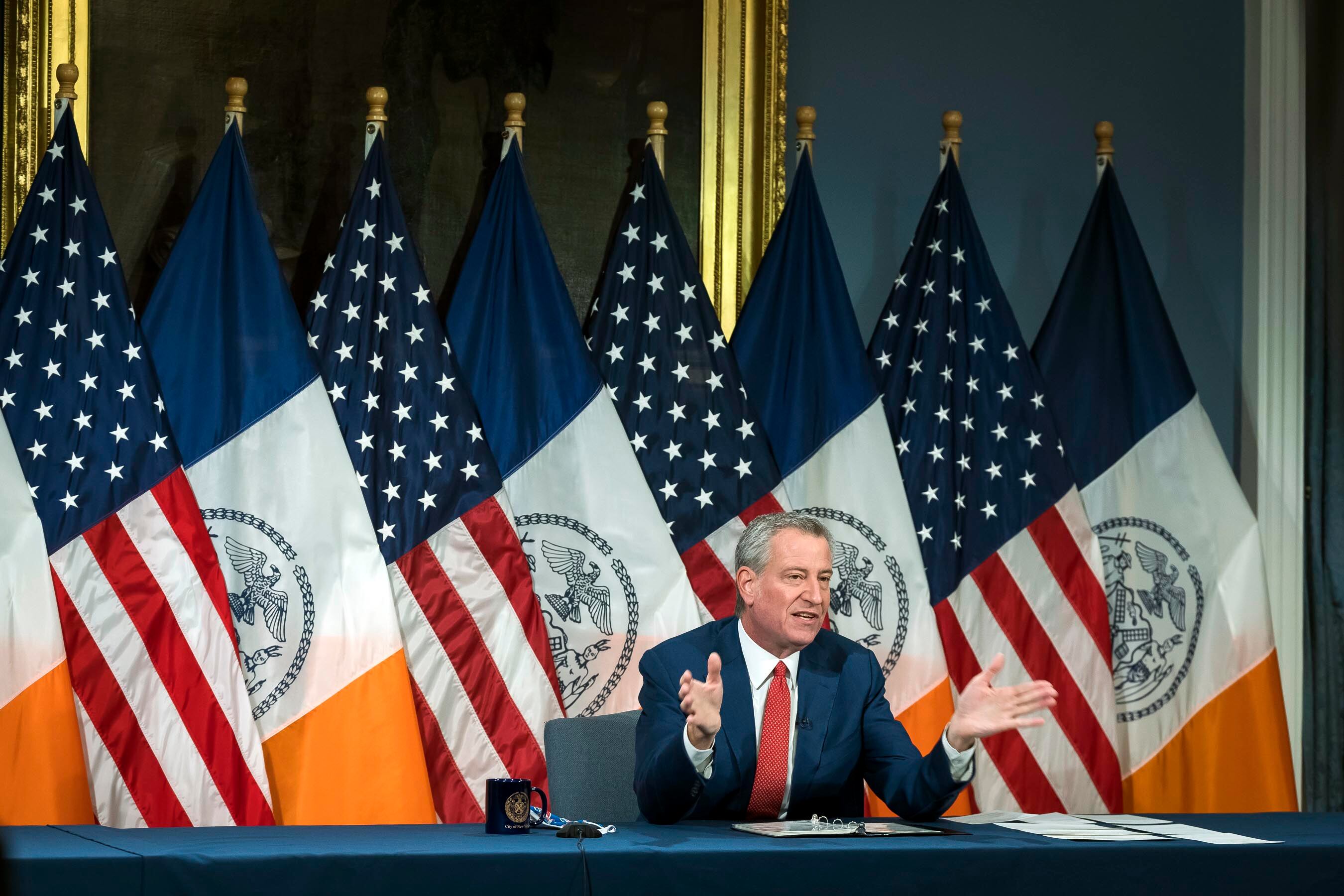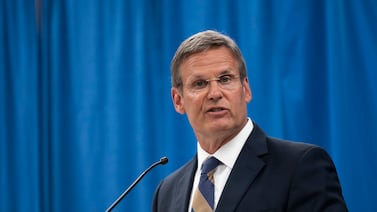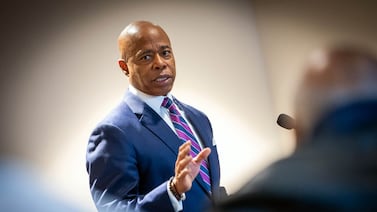As coronavirus cases swell in New York City neighborhoods as well as its schools, Mayor Bill de Blasio pledged Wednesday to add more staffing and resources, if needed, for its “situation room” rapid response team after the holiday break.
The situation room brings together public health officials and education department leaders who are supposed to quickly help principals respond when cases of the coronavirus are detected among students and staff. On Wednesday, nearly 300 public school buildings and programs sat shuttered due to positive cases among educators and students. More than 1,000 individual classrooms across the city were also shuttered, with children and teachers quarantining for two weeks.
“As schools came back recently, we certainly saw the challenges of the second wave and more cases,” de Blasio said. “We’re going to make sure that any additional personnel the situation room needs or any additional training, whatever the need for folks, we’re going to make sure we keep up with the challenge.”
The city is conducting weekly random COVID-19 testing in the school buildings that are open for children in grades pre-K through five, as well as those with significant disabilities in District 75. A single positive case can trigger a two-week closure of individual classrooms while two or more can shutter an entire building for 24 hours, or two weeks if an investigation shows the cases are unrelated.
Miranda Barbot, a spokeswoman for the education department, emphasized that schools have not been a driver of infections.
“As the city beats back a second wave, it’s important to remember that public health officials do not find schools pose any greater risk of COVID-19 transmission to students and staff,” she wrote in an email. “We are working around the clock to quickly investigate and address any positives that arise, and do not hesitate to enact a temporary building closure in order to stop any potential spread within the school community.”
Teachers, principals, union leaders, and elected officials have repeatedly raised the alarm that guidance from the situation room is often slow-coming and muddled. With weekly testing, positive cases will undoubtedly rise, as infections rise among the general population as well. The city’s 7-day positivity rate as of Dec. 21 was 6.19%.
Each positive case and resulting closure represents an enormous amount of time and responsibility on principals navigating the city’s protocols, informing their school communities, and worrying about everyone’s health and safety — not to mention having to prepare for possible transitions to all-remote learning. Some have argued that keeping buildings open has been a distraction, taking the focus away from remote instruction even though most New York City children have chosen to learn exclusively online amid the health crisis.
Roughly 190,000 children of the city’s nearly 1 million students were eligible to return to school buildings that reopened this month.
“Principals are working diligently at all hours of the day and night to make sure they have the most updated information, and delays can cause tremendous challenges and anxiety within their communities,” said Mark Cannizzaro, president of the Council of School Supervisors and Administrators, the union representing principals and other school leaders.
As of now, only a limited number of school buildings are currently open, along with the city’s child care program called Learning Bridges. The situation room’s ability to handle the partially open system raises questions as to whether it will be able to keep up if middle and high schools reopen in the midst of rising infections.
The mayor has previously said he would try to bring middle and high school students back to school buildings starting in January. He has not, however, set a specific date. Returning shortly after the New Year could prove another challenge, as students and staffers will be heading back to classrooms after a long holiday break, and travel and gatherings during the time off could help seed a further rise in infections.
While de Blasio continues his push to keep schools open, he acknowledged that the city could potentially see a shutdown in other services and institutions after Christmas. If that were to happen, the teachers union might push back on schools openings.
School is off from Dec. 24 through Jan. 4, which gives the city time to fine-tune its response, said de Blasio, who praised the situation room for having a “very consistent, very effective” response so far.
“My message to the folks in the situation room is, if you need additional resources from agencies, if we need to send more people over, you’ll get them right away,” he said. “If they need any additions, we’ll get them to them and be ready ahead of Jan. 4.”








